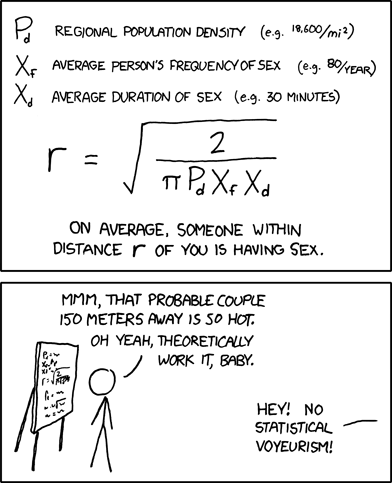A package for making Python unit-aware.
Project description
PyUnits
Use Units in your Python Code
WARNING: This code is still under development. Unless you are invigorated by the thought of an extended correspondence with me, I would recommend against its use for any serious (read: paid) project.
Here's something we've all done before:
length1 = 42 # Meters
# ... 500 lines later
length2 = 12 # Inches
result = length1 + length2 # Oops
Installation
pip install python-pyunits
Units are a pain.
And any time we're computing with some sort of physical quantities, we almost certainly have to take them into account. Whenever I read (or write) this kind of code, I am amazed at how many subtle bugs crop up due to missing or incorrect unit conversions.
WolframAlpha can do it, so why can't Python?
Why indeed? We're used to scientific software and even search engines auto-magically handling unit conversions and dimensional analysis for us. Python is used for a lot of scientific applications, but sadly, this feature isn't built-in to the language.
Ladies and gentlemen, I give you PyUnits:
from examples import example_units as eu
length1 = eu.Meters(42)
length2 = eu.Inches(12)
print(length1 + length2) # Prints "42.3048 m"
Okay. So maybe you're not turned on by unit conversions. I can understand that. But guess what? PyUnits also understands dimensional analysis. In fact, it understands it at least as well as Randall Munroe does:
from examples import example_units as eu
from pyunits.compound_units import Mul, Div
CubicMeters = Mul(eu.Meters, Mul(eu.Meters, eu.Meters))
CubicIn = Mul(eu.Inches, Mul(eu.Inches, eu.Inches))
Pascals = Div(eu.Joules, CubicMeters)
MilesPerIn3 = Div(eu.Miles, CubicIn)
plank_energy = eu.Joules(1.956E9)
core_pressure = Pascals(3.6E11)
# Technically, this is the Prius C gas mileage. It seems that Priuses
# (Priui?) have improved somewhat since the comic was published...
# Note also that we don't really have the ability to do mpg directly yet,
# so we do mi / in^3 and divide by 231. (1 gal = 231 in^3)
prius_mileage = MilesPerIn3(46 / 231)
channel_width = eu.Kilometers(33.8)
pi = plank_energy / core_pressure * prius_mileage / channel_width
print(pi) # Prints 3.14
"But wait", I hear you cry. "That's a totally contrived example!" And it may well be. So let's try something a little more... practical:
import math
from examples import example_units as eu
from pyunits.compound_units import Mul
SquareMiles = Mul(eu.Miles, eu.Miles)
SquareMeters = Mul(eu.Meters, eu.Meters)
population_density = 18600 / SquareMiles(1.0)
sex_frequency = 80 / eu.Years(1.0)
sex_duration = eu.Minutes(30)
denom_value = math.pi * population_density * sex_frequency * sex_duration
fraction = 2.0 / denom_value
# Ensure result is in square meters.
fraction = SquareMeters(fraction)
# Square root has to be done outside of PyUnits, since we don't support that
# (yet).
sex_radius = math.sqrt(fraction.raw)
print(sex_radius) # Prints "139.33", the correct result for these parameters.
As you can see, PyUnits is suitable for Serious Scientific Work.
Cookbook
I have a colleague who likes nothing better than copying and pasting code from README files. He refers to this type of file as a "cookbook". Therefore, I will be providing a similar facility in this section.
Building a Unit Library
So far, all the examples in this document have used the example unit library
provided in this repository under examples/example_units.py. That's all well
and good, but if you're using PyUnits for real, the first thing you're probably
going to want to do is create your own unit library:
from pyunits.unit import StandardUnit, Unit
from pyunits.unit_type import UnitType
class Length(UnitType):
"""
Type for length units.
"""
@Length.decorate
class Meters(StandardUnit):
"""
A meters unit.
"""
@property
def name(self) -> str:
"""
See superclass for documentation.
"""
return "m"
@Length.decorate
class Centimeters(Unit):
"""
A centimeters unit.
"""
def _from_standard(self, standard_value: StandardUnit) -> None:
"""
See superclass for documentation.
"""
# Convert from meters.
self._set_raw(standard_value.raw * 100)
def to_standard(self) -> Meters:
"""
See superclass for documentation.
"""
# Convert to meters.
return Meters(self.raw / 100)
@property
def name(self) -> str:
"""
See superclass for documentation.
"""
return "cm"
Fundamentally, PyUnits has two types of objects that the user needs to be aware
of: Unit and UnitType. The former is easy: a Unit instance simply
represents a value with a specific unit. The second is a little harder to
explain.
Intuitively, some units can be trivially converted to each-other, eg. Meters
and Inches, and some can't be, eg. Meters and Seconds. The UnitType class
exists in order to allow PyUnits to understand these relationships. When using
PyUnits, every Unit subclass must be decorated with an appropriate UnitType
subclass. Two units that are marked with the same UnitType can be trivially
converted to each-other. Two units that aren't can't easily be converted, and
PyUnits with raise an error if you try to do so.
Standard Units
For all the units of a particular UnitType, PyUnits expects the user to choose
a "standard unit". In practice, which unit you use as the standard one doesn't
really matter, as long as you can tell PyUnits how to convert from every other
unit to the standard one and vice-versa.
In practice, this is done by overriding two methods:
- The
_from_standard()method takes an instance of the standard unit and initializes thisUnitinstance appropriately with its converted value. - The
to_standard()method returns an instance of the standard unit with an equivalent value to this one.
Once we have that set up, PyUnits can convert implicitly between all the units
of this UnitType:
meters = Meters(10)
centimeters = Centimeters(meters)
print(centimeters) # prints "1000 cm"
Which unit is considered to be the standard one is defined by which one
inherits from the StandardUnit class. (This is Meters in the above example.)
Pretty-Printing
PyUnits has (currently limited) support for pretty-printing unit values. This
is utilized by overriding the name property, as seen in the example above.
This property should return a suffix that will be appended to the unit value
when printing.
Numpy Integration
PyUnits can essentially be thought of as a wrapper around Numpy. That is
because Unit subclasses actually store and manipulate Numpy arrays internally:
import numpy as np
from examples import example_units as eu
secs = eu.Seconds(np.array([1, 2, 3]))
print(secs) # prints "[1 2 3] s"
You can access the raw Numpy value of a unit using the raw property:
print(secs.raw) # print "[1 2 3]"
Dimensional Analysis
PyUnits is generally clever about unit operations:
from examples import example_units as eu
meters = eu.Meters(2)
seconds = eu.Seconds(4)
print(meters / seconds) # prints 0.5 m\n-\ns
As can be seen in the earlier examples, it will even go so far as to auto-simplify the results of multiplication and division operations.
Also, compound unit types can be created manually:
from examples import example_units as eu
from pyunits.compound_units import Mul, Div
Watts = Div(eu.Joules, eu.Seconds)
SquareMeters = Mul(eu.Meters, eu.Meters)
# These can then be used like normal units.
watts = Watts(10)
square_meters = SquareMeters(50)
Unitless Values
PyUnits has the special concept of "Unitless" values, which, paradoxically,
can be used like a Unit in many cases. These crop up most often when doing
division.
from examples import example_units as eu
meters1 = eu.Meters(10)
meters2 = eu.Meters(5)
print(meters1 / meters2) # prints "2"
The result of this division is an instance of the class Unitless. This class
can also be used directly in order to represent concepts such as "inverse meters".
from examples import example_units as eu
from pyunits.compound_units import Div
from pyunits.unitless import Unitless
inverse_meters = Div(Unitless, eu.Meters)
PyUnits will refuse to implicitly convert Unitless instances, however. If
you want to use this as a value of a unit, you have to explicitly take the raw
value:
from examples import example_units as eu
from pyunits.unitless import Unitless
unitless = Unitless(5)
meters = eu.Meters(unitless) # Error!
# The correct way...
meters = eu.Meters(unitless.raw)
This is an explicit design choice that was made to avoid cases where values that did not have units could "magically" acquire them.
Project details
Release history Release notifications | RSS feed
Download files
Download the file for your platform. If you're not sure which to choose, learn more about installing packages.
Source Distribution
Hashes for python-pyunits-0.1rc3.linux-x86_64.tar.gz
| Algorithm | Hash digest | |
|---|---|---|
| SHA256 | 9e5c037c4aca5d7e84dc7f6b02ede71401df51fb8f692fbcd3f256e91aa0c478 |
|
| MD5 | 3abce24199f2cde26de5875e78026f3e |
|
| BLAKE2b-256 | 3af8d871624e892af24160bcc488b61362b7b6c23c8e5a9ee72446edfb073d37 |













